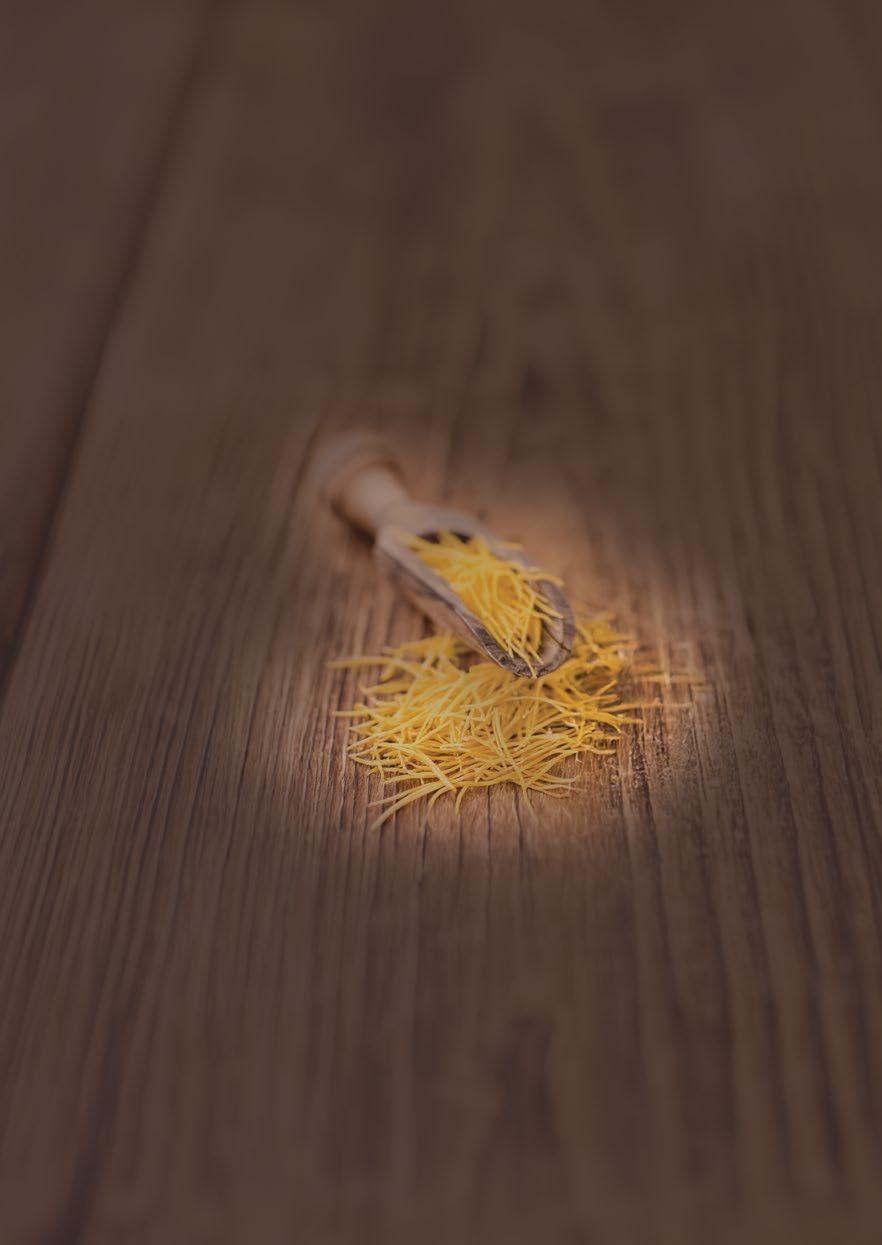

Breezethe village

Happy Easter


Letter from the Editor
Hello again and welcome…
The weather in the UK is a subject of much conversation and a lot of complaining. I’m not saying it’s great, but we don’t live in a climate that gives us monsoons, unbearable heat or bitterly cold winters, so why don’t we appreciate it more?
I think it’s the sun, or rather the lack of it. Our year starts with day after day of sad skies and damp air. We retreat to our homes to face a stream of awful and worrying world news. Both figuratively and literally, it's hard to find the bright side.
But we’re in spring now – yay! The clocks have gone forward, meaning evenings are longer and, when the sun does come out, it’s not just brighter, it’s actually warm. And there are four bank holidays in the next two months. Yay again!
Obviously, in the wider world there’s a lot to be concerned about. And many at home have their own troubles too. But, no matter what your circumstances, seeing a bit of sunshine, some spring flowers and life anew is uplifting.
Could things be better? Of course. There’s no perfect country in which to live. Could things be worse. Yes, and a lot worse at that.
So, I've decided I'm going to stop whingeing and look for the positives: our streets are relatively clean and safe, food is easily available (as my waistline will attest) and we’re unlikely to face a summer where temperatures are so high we can’t leave our homes.
And the thought I will leave you with this month:“Spring will come and so will happiness. Hold on, Life will get warmer.”
Until next time…
Woulds Town Council
a short story by murray clarke
your own spaghetti
Patrol 12 home interiors with katherine sorrell
truly comfy bedroom
money on your garden
gardening with caroline knight What's in a name? 18 travel with susannah hickling
and biccie time!
The Village Breeze is a local community magazine and business directory distributed monthly to 8,000 homes and businesses in Appleby Magna, Donisthorpe, Linton, Measham, Moira, Oakthorpe and Overseal.
Deadline for next issue 15th April, 2025
Editor Sheila J. Bethell
General enquiries 0753 441 3055
Advertising enquiries 01283 814214
Drop us an email info@thevillagebreeze.co.uk
Read the magazine online at www.thevillagebreeze.co.uk
The Greatest Showman
Singer-songwriter Gary Barlow, who found fame with Take That, embarks on a UK tour this month. We celebrate his 40-year career and look at his life away from the spotlight.
His CV is impressive: he’s one of Britain’s most successful songwriters and record producers. As part of boy band Take That, he has won eight Brit Awards and sold more than 45 million records. Now Gary Barlow’s new solo tour, The Songbook Tour 2025, will see the 54-year-old showman play 41 UK dates.
Born in Frodsham, Cheshire, Gary taught himself to play the piano aged ten and began writing songs. In 1986, at 15, he entered a BBC ‘Pebble Mill at One’ Christmas song competition with ‘Let’s Pray for Christmas’, reaching the semi-finals.
While performing on the northern club circuit, singing cover versions and his own songs, Gary was spotted by agent Nigel Martin-Smith, who wanted to use the teenager as the frontman for a new boy band – and so in 1990 Take That was born.
By 1996, Gary was pursuing a solo career. He was awarded an OBE in the 2012 Queen’s Birthday Honours List for his services to the entertainment industry and to charity.
LOVE AND LIFE
Behind the scenes, Gary is loving, loyal and fiercely protective of his family.
Gary is married to Dawn Andrews, a dancer on Take That’s 1995 Nobody Else Tour. Gary has described her as ‘the love of his life, the one constant’. She gave up her career after the couple’s first child Daniel was born in 2000, the year the couple wed. Emily was born in 2002 and Daisy in 2009.
“I travel all around the world; she gave up her job to bring our kids up,” said Gary. “Left her dreams to one side and I got to do mine still… She’s a wonderful woman.”
In August 2012 Gary and Dawn’s fourth child, Poppy, was stillborn. The pain is still there for Gary. Speaking on ‘The Imperfects’ podcast last year, he revealed: “I’ve been angry for a long time about that, I haven’t really found peace with it yet.”
Gary has also been frank about battling an eating disorder when his career plummeted in the late 1990s.
BACK ON TOUR
Away from music, Gary Barlow has been commissioned by ITV for another wine tour following his successful debut travel series, ‘Gary Barlow’s Wine Tour: South Africa’, which aired in January and February 2025. The new series will follow Gary as he tours Australia.
Last year’s series coincided with the third anniversary of Gary’s award-winning wine range. He said, “Someone told me recently that we have sold the equivalent of 10 million glasses since Gary Barlow Wines were launched, which is an incredible milestone.”

The Songbook Tour 2025 will see Gary perform songs from his much-celebrated back catalogue of hits with both Take That and as a solo artist. For a full list of shows and to buy tickets, visit www.tix.to/garybarlow.




When pets make you poorly
It’s rare for humans to get sick from their animal companions – but it can and does happen.
Illnesses can spread from pet to person through, for example, contaminated poo or pee, or a bite or scratch. Back in 2014, the phenomenon, known as zoonosis, made headlines when Public Health England announced that two people in England had developed tuberculosis after contact with a domestic pet. The two human cases were linked to nine cases of Mycobacterium bovis infection in cats in Berkshire and Hampshire.
Like us, animals carry germs, though most common illnesses among house pets, such as distemper, canine parvovirus and heartworms, can’t spread to people.
Zoom in on zoonosis
Here are some examples of diseases that can transfer from pets to humans:
Rabies: A contagious viral disease that can be transmitted through bites (saliva) or scratches from infected animals, notably dogs and bats.
Ringworm: A fungal infection that spreads through direct contact with an infected animal. It can also spread through contact with objects or surfaces that an infected animal or person has touched.
Toxoplasmosis: A common infection that you can catch from a parasite in the poo of infected cats. It is usually harmless but can cause serious problems in some people, for example, if you are pregnant or have a weakened immune system.
Salmonella: Pets, especially reptiles and birds, can carry salmonellosis. It can be transmitted to humans through touching contaminated food or surfaces. While it’s uncommon in dogs and cats, they can be carriers of the bacteria, spreading it through their faeces and saliva.
Psittacosis (parrot fever): An infection that humans can get from infected birds (such as parrots, macaws, budgies, cockatiels, ducks and hens). Humans usually get psittacosis from breathing in dust containing droppings, feathers or secretions from infected birds. It typically causes flu-like symptoms and can also lead to pneumonia, sore throat and difficulty breathing.
Campylobacter: Often associated with birds and other livestock, this bacterial infection can also be carried by dogs and cats. In humans, it causes diarrhoea, stomach ache and fever.
Parasite protection
Parasites such as fleas, ticks and worms not only make your pet ill or uncomfortable, but they also risk spreading disease to other animals and humans. Ticks give both dogs and humans Lyme disease. Use tick prevention products on pets, and safely remove and dispose of ticks as soon as possible. For more tips on protecting your pet from parasites, visit the British Veterinary Association website at www.bva.co.uk
Common sense precautions
Practicing good hygiene, such as washing hands after handling pets, keeping their living areas clean and ensuring they are regularly checked by a vet, can help reduce the risk of transmission. If you suspect you may have contracted an illness from a pet, it’s advisable to consult a healthcare professional.


Mayor’s Message
Ashby Woulds Town Council
It’s been a busy start to the year. In January we held our budget meeting, looking carefully at our income and expenditure, identifying priorities for the year and ensuring best value is maintained for all residents in Ashby Woulds.
Since the town council took over the former Moira Youth Club building last year, volunteers have undertaken a lot of work to get the premises ready for reopening as the Ashby Woulds Community Hub. See the next page for more information. We look forward to welcoming everyone.
To hear more about the work of the town council please keep in touch with us via our website www.aw-tc.co.uk or follow our facebook page.
Our meetings are held on the second Monday of every month except August at Moira Village Hall and start at 7pm. On the 12th May we will be holding our Annual Meeting and Annual Parish Meeting with an earlier start time of 6.30pm. All welcome to attend.
Finally, I would like to thank the Town Clerk and my fellow Town Councillors for their continued support and wish you all a very Happy Easter.
Laurence Ordish, Mayor AWTC
Coffee Mornings
Our coffee mornings continue to grow bigger and bigger and provide a welcoming and friendly place to gather and chat over a hot drink and biscuit or two.
Coffee mornings are held every Wednesday 10am – 12noon at Moira Village Hall. There is no need to book just drop in.

Town Council Contacts
Town Mayor Councillor Laurence Ordish Town Council Office 01283 552784 Laurence.o@ashbywouldstowncouncil.gov.uk
The office is open Monday, Tuesday and Thursday mornings 9am-1pm and is easily accessible from the main car park.
Email: clerk@ashbywouldstowncouncil.gov.uk Telephone: 01283 552784.
Visit our website: www.ashbywouldstowncouncil.go.uk or find us on facebook @ashbywouldstowncouncil
New Community Hub - now available for hire
For further details and to arrange a look round please contact the town council office.

Ashby Woulds Community Hub
Our new Community Hub is open and available for hire. The Hub consists of a main room with toilets and has direct access to a functioning kitchen. WIFI, tables and chairs are available. The room can accommodate up to 50 people and there is a large outdoor secure space. There is also a large car park. Regular weekly hire is available in addition to ad hoc bookings. For further information and to arrange a look round please contact the town council office.
EASTER GREETINGS FROM ASHBY WOULDS TOWN COUNCIL

ASHBY WOULDS TOWN COUNCIL
Serving the people of Albert Village, Boothorpe, Moira, Norris Hill and Spring Cottage
Opening hours: Monday, Tuesday and Thursday mornings 9am - 1pm. Telephone: 01283 552784 Email: clerk@ashbywouldstowncouncil.gov.uk Website: www.ashbywouldstowncouncil.go.uk Facebook: @ashbywouldstowncouncil
murray clarke
Grow your own Spaghetti
There is one meal that children absolutely love more than anything else in the world! In reply to the question: "What do you fancy for your tea, kids?” they invariably chorus: “SPAGHETTI pleeease!!!”
Now, I don’t know about you, but the Spaghetti available from your local supermarkets – either dried or as tinned hoops – can be really expensive. There are bargains to be scooped up at Aldi and Tesco, but like so many vegetables, you can make significant savings by growing your own. All you need is a sunny south-facing plot in your garden and a peaty, well-drained soil with lots of compost.
The original Spaghetti plant can be traced back to early Roman times, and was a particular favourite of Julius Caesar. However, sad to relate, he was betrayed by his best friend Brutus, stabbed twentythree times by a group of senators, and assassinated. (“Beware the Ides of March” . . . and all that!) After his death, the popularity of the humble Spaghetti fell into decline. It wasn’t until much later in our past that the dangling perennial made a revival. In 1588, Sir Walter Raleigh (he of the Spanish Armada fame) was halfway through eating a hearty meal of Spaghetti, when the fleet of galleons sailed up the English Channel towards Plymouth Hoe. Sir Walter took one look at his unfinished meal and stubbornly declared: “I WILL finish my Spaghetti!” History is very muddled at this point and reports that he was interrupted whilst playing a game of bowls. This, I can categorically assure you, is not true! Bowls, yes, but bowls of Spaghetti!
After Raleigh’s death in 1618, there is no mention of Spaghetti until after the

explorer Robert Scott’s fated expedition to the Antarctic – some three hundred years later. Scott and his four brave adventurers suffered frostbite and perished in their tents during the return journey. Scott’s last words, chronicled in his daily diary stated: “For God’s sake, look after our Spaghetti.”
By the late 1950s, the mild winters on the borders of Italy and Switzerland overlooking Lake Lugano, produced vast plantations of Spaghetti. The plants were subsequently exported to the United Kingdom, and so began our love affair with Spaghetti pasta!
For those of you who adore the dish, there is nothing like tasting home-grown Spaghetti! So here are some useful tips on how to grow your kid’s favourite food: Spaghetti seeds (Latin botanical name: APRILIS STULTUS) can be purchased easily – either online or from most local garden centres.
“Sow the seeds indoors in late December, then transplant them outdoors after the last frost, ensuring a sunny spot with well-drained soil rich in organic matter. Space the plants out adequately, and provide support for the vines. Water regularly, especially during the flowering season.”
“Depending on the weather, your Spaghetti should be ready to harvest by early April when the strands attain a length of at least 30cm (or 1ft.) Lay out in the sun to dry, and then store in a dark place (a cool shed or a kitchen cupboard are ideal) for future use.”
So, there you have it – the perfect home-grown Spaghetti! And finally . . . When serving your scrumptious Spaghetti –please remember to take it all with a pinch of salt!

Paw Patrol

A truly comfy bedroom
How do you make the room where you sleep into a cosy, tranquil haven?
Sleep on a supportive mattress
Pocket sprung mattresses, with springs in calico pockets, are evenly supportive and breathable. If you prefer foam, look for multiple layers, with a top layer of at least 5cm. Perhaps the ultimate solution is a combination mattress, offering springs plus a comfortable, non-sprung top layer.
Snuggle up in a superb duvet
You’ll want a duvet that’s warm in winter and cool in summer. A tog of 8 to 10.5 is recommended for year-round use. The perfect combination is two buttontogether duvets, one heavier than the other, which can be used together or separately depending on the time of year. Choose a natural filling for softness and breathability, or a synthetic filling if you have allergies.
Aim for pillow perfection
Options include down, feather, wool, latex, memory foam, synthetic down and hybrid, plus specialist cooling, anti-snoring and sleep apnoea pillows. Polyester pillows are lightweight, easy to launder and inexpensive. Feather pillows last longer and have natural breathability. All pillows should be replaced every two or three years.
Go for gorgeous bedlinens
The best fabric is the one that feels right for you. Linen and hemp have excellent breathability, a cool, crisp touch and soften as they age. Silk keeps you warm in winter and cool in summer, and may help with allergies. Bamboo and eucalyptus offer similar benefits. Cotton is soft, natural, breathable and affordable. Look for quality yarn and a thread count of 200.
Banish unwanted light
Floaty curtains are pretty, but earlymorning light can be disturbing. Blackout blinds or curtains could ensure you get that much-needed shut-eye, or simply buy an eye mask.

Block out noise
If noise from next door is a problem, try moving your bed or placing your wardrobe against the shared wall. If it’s coming from outside, consider thick, heavy curtains. Try earplugs or play soft, natural sounds such as waves or rustling leaves, or white, pink or brown noise.
Sniff out the right scents
According to the Sleep Foundation, research has associated lavender with improved sleep, or experiment with rose, chamomile, jasmine,


ylang ylang, vanilla and sandalwood. Use a reed or electric diffuser, or try a pillow spray.
Find the right temperature
Experts recommend a temperature between 15.5 and 20°C for sleep, with 18.3°C being the optimum. In summer, keep the curtains closed when the sun is pouring in, and invest in a fan if you need more cooling air circulation.



Save money on your garden

Gardening can be expensive, but you don’t always have to dig deep to get a blooming brilliant result.
Buy bare-root plants
These are sold without a pot or any soil around the root. They’re often significantly cheaper than equivalent plants in pots but should usually be planted straightaway between November and April. Hedges, trees, fruit bushes and some perennials such as roses and peonies can be planted bare root.
Split perennials
Planting herbaceous perennials, which can come up year after year, is cheaper than opting for annuals. You can offset the initial higher cost by splitting them when you buy them and creating more plants. Once they’re established, you can take cuttings, divide them again or collect seeds to plant elsewhere. Grow plants from seed
While you might wait a bit longer for them to grow, seeds are cheaper to buy than plants in pots. They often come as freebies with magazines.
Swap with other gardeners
Seeds, cuttings and unwanted plants can be swapped with friends and neighbours to introduce variety at no cost. And look out for spare plants going begging on garden walls.
Join a gardening group
A local gardening club is a great source of advice and an opportunity to exchange seeds and plants and socialise. As a member, you can often benefit from discounts at nurseries and garden centres.
Grow veg
Producing food will save you loads on your food bills. For vegetables that keep on giving and so offer great value, consider courgettes, French or runner beans, and chard.
Make your own compost
If you have a small garden, opt for a compost bin where you can put a mix of vegetable peelings, plant debris from your garden (don’t overdo the grass cuttings), and cardboard and coffee grounds. You can also put coffee grounds directly onto the earth around plants, as they contain nutrients that help them grow.
Get creative with pest control
Save your plants, your cash and the environment with nifty tricks such as putting Vaseline around pot rims to deter slugs, scattering slices of lemon or lime on borders to repel cats, and using old net curtains to protect cabbages against moth and butterfly larvae. Companion planting can also help you tackle bugs: the strong scent of marigolds is reputed to put off aphids, while growing onions amongst carrots can keep carrot root fly at bay.
Repurpose your junk
All sorts of containers can serve as pots, including old watering cans, cooking pots, even an old shoe. Use plastic bottles as cloches and opaque ones for plant labels. Toilet roll tubes make good biodegradable plant pots for seeds. Tin cans can serve the same purpose – just drill a hole in the bottom.
Don’t waste water
Install a water butt and collect wastewater from washing up, the bath or even the shower. Watering in the morning or evening minimises evaporation.

What's in a name
The world of horticulture can appear full of mystery until you understand the terminology.
First off, what’s with the Latin? There are no longer any native speakers of this classical language, which was once spoken throughout the Roman Empire. Many English words are influenced by Latin, particularly within technical vocabulary. So why is it helpful to refer to plants by their botanical, Latin name, rather than their common name?

The answer is very simple. Using Latin terminology means that wherever you are in the world, the botanical name for a plant will be the same. There will be no confusion.


Aiming for clarity
Take the lily, for example. Many plants commonly referred to as lilies are not from the genus Lilium. The African lily is actually Agapanthus and it is related to garlic, the snowdrop and the daffodil.
A water lily is a member of Nymphaea, an aquatic genus of plants in the family Nymphaeaceae. Peace lily is a tropical houseplant which belongs to the genus Spathiphyllum, meaning ‘spathe-leaf’ in Latin.
The plantain lily is actually a Hosta, a day lily is a Hemerocallis and Peruvian lilies are Alstroemeria. See what I mean? Latin names are essential if we are to converse accurately about plants.
The way plants are named (nomenclature) is relatively simple. They are grouped into the framework of family, genus and species. The name that appears on the label – for example, Carpinus betulus (hornbeam) – will generally consist of two words, the genus and the species. The genus comes first and starts with a capital letter. All plants in the same genus will share characteristics as they have a common ancestor. In this case, they are members of the birch family, Betulaceae. The species, which starts with a lower-case letter, is an individual member of the genus; there could be several thousand species in one genus. Carpinus japonica is the Japanese hornbeam, a different species.
Of course, names can be longer, as, within different species, there are sub-species, varieties and cultivars, as well as different forms. Each word on a plant label can tell you more about the individual plant.
Other terminology explained
The natural progression of improved knowledge and ideas results in an ever-changing succession of linguistic terms. Here are just a few:
An Asiatic lily is a true Lilium by name
Alstroemeria is often called a Peruvian lily
A water lily is not a true Lilium
Perennial: A non-woody plant that is expected to live for more than two years.
Biennial: A non-woody plant that generally produces green growth during the first year, then flowers during the second year, before dying down. Biennials often leave viable seeds.
Annual: Normally a non-hardy flowering plant that lives only for one warm season.
Shrub: A woody plant that doesn’t die down to ground level in winter. It usually has several stems arising from the ground and grows to a height of more than 60cm.
Subshrub: A low-growing shrub, such as lavender, rosemary and small heathers, with woody stems.

Top grafted: Often refers to a certain species of tree or shrub that has been grafted onto a longer stem.
Pollination group: Many fruiting plants need to be pollinated by others from the same group, but of a different variety. This generally means they produce flowers at the same time. For example, the Cox needs to be pollinated by a different type of apple, such as Discovery.
Self-fertile: Some fruit trees do not need to be pollinated from another tree. Insects are able to pollinate the tree using its own flowers.
Triploid: A fruit tree needing two partners for complete pollination. Some apple trees such as Bramleys are sterile and need two different apples to achieve pollination.


COMMUNITY GARDENING GROUP
DON'T KNOW ONE END OF A SPADE FROM ANOTHER?
Whether you do or not, you would be welcome at our friendly community gardening group. Formed initially as one of Measham Medical Unit’s Social Prescribing groups, we aim to offer exercise and social contact as a means to bolster physical and emotional well-being and improve our public spaces at the same time.
We currently look after 3 sites in Measham, meeting on a Monday at 10am, to work until 11.15am or so, when we head to the Age UK Cafe on Measham High St for tea and biscuits.
(Own cost : £1)
Some members also tend an allotment in Appleby Magna — organic, zero air miles, fruit and veg!
Call or text Linda on 0745 299 1949.

Rosmarinus, known as rosemary, is a subshrub, visited here by a hummingbird hawk moth
Digitalis, known as foxglove, is a biennial plant
Heavenly highways

There’s nothing quite like a road trip: wonderful views, your choice of music and the freedom to go wherever your heart takes you.
With millions of miles of scenic roadways worldwide, the hardest part is picking your route. Here’s a handful of great road trips to inspire your next adventure behind the wheel.
NEW ENGLAND, USA
There’s no better time to take a road trip around New England than in autumn. As the season switches, the landscape explodes into a riot of colour. There are lots of routes, but New Hampshire’s Kancamagus Highway is one of the most spectacular: flanked by layer upon layer of flaming red, orange and yellow trees, this 34mile drive is a journey you’ll want to last forever.

ATLANTIC ROAD, NORWAY
Navigating Norway's extensive road network is one of the best ways to take in the country’s epic landscapes. There are 18 designated national scenic routes, but the fact the Atlantic Road was the setting for the James Bond film, ‘No Time to Die’, is a testament to its wow factor.
This road connects Averøy Island with the mainland via a series of small islands and islets spanned by eight bridges. Few roads bring you closer to the ocean: lower your window and feel the sea mist on your face.
CHAPMAN’S PEAK, SOUTH AFRICA
Starting at Hout Bay, climbing to Chapman’s Peak and

finishing in Noordhoek, this road takes you on a circular route around South Africa’s southern peninsula.
Chapman’s Peak Drive (inset above) is only seven miles long and winds tightly along the rugged coastline, offering up jaw-dropping views over the Atlantic. Affectionately known by the locals as ‘Chappies’, the route has over 100 tight turns and a sheer drop to the ocean below, so driving slowly is recommended!
TRANSYLVANIA, ROMANIA
Romania’s twisting Transfăgărășan Road (main pic) traces a north-south route between the country’s highest peaks – the Fagaras Mountains. The road is doable in a day; soak up 56 miles of steep vistas and hairpin bends and there’s still time for a hike along the way. Be sure to stop off at Dracula’s Castle and Bâlea Waterfall to catch a cable car up to Bâlea Lake.
Bear in mind that adverse weather means the Transfăgărășan Road is only reliably open from late June through mid-October.
THE WILD ATLANTIC WAY, IRELAND

From Donegal to West Cork, the Wild Atlantic Way hugs Ireland’s western coast for 1,600 miles. Skirting around high sea cliffs and sandy bays, the route also takes you through some of Ireland’s finest traditional towns and villages, including Donegal Town, Galway and Kilkee. The route is divided into 14 stages, with highlights including the famous Cliffs of Moher, the Slieve League Coast and the Dingle Peninsula. Whichever section you choose, dramatic seascapes will be your constant companion.











ASHBY u3a
AFTERNOON TALK WITH...
DR MARTIN VAUGHAN 'Photography and Wildlife'
If you want to know more about photography and how to capture the best wildlife images then our May meeting is a must for you. Dr Martin Vaughan, a retired local GP will talk about how to get the best shots and share some of his own memorable moments. Come along to the Congregational Church, Kilwardby Street, Ashby-de-la-Zouch LE65 2FQ [Look out for our flag on the pavement outside] on Tuesday 27th May. Doors open at 1.30pm for 2pm start. Tea, coffee and biscuits will be available – along with a warm welcome. Why not come along as our guest for a ‘taster’ visit? In addition to our monthly talks we also have different interest groups, come and see. For more information visit: ashbyu3a.co.uk
email: members@ashbyu3a.co.uk
Facebook: facebook.com/Ashby u3a
Getting better everyday





Waist away
Many of us would like to look slimmer around the middle, and there are good health reasons for it too.
The size of your waist says a lot about how healthy you are. In fact, it’s often a better indicator than BMI of how likely you are to develop conditions linked to excess weight, such as diabetes, heart disease, arthritis and certain cancers. This is because you can have a healthy BMI and still be carrying too much unhealthy fat.
The fat on your belly that you can feel – subcutaneous fat – may mirror fat built up around organs such as your liver and heart – visceral fat. That is the stuff that poses a risk to your physical well-being.
Ideally, your waist circumference – measured midway between the bottom of your ribcage and your hip bone –should be less than half your height. Here are some ways you can work towards having a flatter tummy:
EAT LESS To lose belly fat you need to lose weight elsewhere. Cutting down can make a big difference. Trick your brain into thinking it’s eating more by using a smaller plate and take up most of it with two servings of lowcalorie, high-fibre veg. Skip seconds.
EAT HEALTHILY The recommendation for losing weight is to reduce your food intake by around 600 kcal a day. So men should be eating 1,900 kcal a day and women 1,400 kcal. Include plenty of veg and protein, such as beans, pulses, fish, eggs and meat, to fill you up. Carbs should be wholegrain, with potatoes, bread, rice and pasta making up no more than a third of your meal. Opt for lower-fat dairy.
SHAKE YOUR SALT HABIT Too much sodium has been linked to fluid retention and more body fat, especially around the middle. So use other seasonings rather than salt in the food you cook, don’t add it to meals and stay away from salty snacks such as crisps.
TAKE A WALK Taking plenty of exercise helps you burn more calories. It’s recommended that everyone gets active for 150 minutes a week. Brisk walking counts, with the added advantage that it makes your digestion more efficient.

HIT THE HIIT
High-intensity interval training (HIIT) involves short bursts – perhaps 30 seconds – of high-intensity exercise, such as sprinting or cycling, followed by short periods of lower-intensity exercise or rest. Some research has shown HIIT can reduce waist circumference. Workouts need only last 10-30 minutes and be done several times a week.
SAY YES TO YOGA One study of women with abdominal obesity found that those who took a 12-week yoga programme had a slimmer waist at the end of it. Yoga also tackles stress – again associated with a larger midriff.
PRACTISE PLANKS Resistance training is good for maintaining muscle mass, and regular planks, in particular, tone muscles around your core. It involves holding the high position in a push-up (or resting on your forearms) for as long as you can, ideally 30 seconds at a time.
SLEEP WELL
An American study found that people who didn’t get enough zzz put on more weight. One problem is that being awake longer leads to more opportunities to snack. In another large international study, going to bed after 10pm was associated with a larger waistline. Aim to go to bed early and get at least seven hours’ sleep.
DRINK WATER NOT ALCOHOL Booze is laden with calories, while water has none. What’s more, you need to stay well hydrated as part of a healthy weight-loss diet.







What lies beneath

As interest in metal detecting surges, Susannah Hickling unearths the facts all beginners need to know.
In January 2019, in a field not far from Bath, seven metal detectorists uncovered something amazing. Known as the Chew Valley Hoard, the discovery contained 2,584 silver pennies dating from the Norman Conquest. It was acquired for the nation last year for £4.3 million – the highest-value treasure ever found in the UK and one which would shed unprecedented light on a tumultuous period in English history. The landowner and detectorists divvied the proceeds; one bought a house with his share.
Finding favour
The popularity of metal detecting has rocketed in recent years. This is partly thanks to the quirky BBC comedy ‘Detectorists’, which is about the lives of two metaldetecting mates. According to the Portable Antiquities Scheme, which is run by the British Museum and National Museum Wales and records archaeological finds by members of the public, 95% came from metal detecting in 2023.
still help you make an exciting discovery. You’ll also need a headset to blot out the beeping and something to dig up your finds with. Public liability insurance is important too. The National Council for Metal Detecting includes this in its £8 annual membership.
You’ve got all the gear, now what? Firstly, remember all land belongs to someone, so you’ll need permission before you start. It’s best to draw up an agreement with the landowner, setting out each person’s obligations and how the proceeds of any find deemed to be treasure should be split. You should dig carefully, dispose of rubbish, close gates and be respectful of plants and wildlife.

Of course, most detectorists must content themselves with a coin or two or a few rusty nails. Many simply enjoy connecting with both the past and the countryside and feeling the exhilaration that comes with the prospect of furthering historical knowledge. It’s a sociable hobby too, with communities and clubs where you can swap advice and news about finds.
Starting out
An entry-level device costs under £150 but it could
Buried treasure? It might sound romantic, but treasure is strictly defined in The Treasure Act 1996. Criteria include an object or a group of objects over 300 years old with more than 10% metal content, prehistoric finds containing any metal and metal items over 200 years old that offer an exceptional insight into the past. If you think you’ve found treasure, it must be reported to the coroner within 14 days. This can be done by notifying your local finds liaison officer. If the find is confirmed as “treasure”, it belongs to the Crown and will either be disclaimed or offered for sale to a museum. Once sold, the finder and the landowner split the reward. Non-treasure items are the landowner’s property but you are encouraged to report these finds to the Portable Antiquities Scheme. This is your chance to contribute to the ever-growing body of knowledge about Britain’s past.


